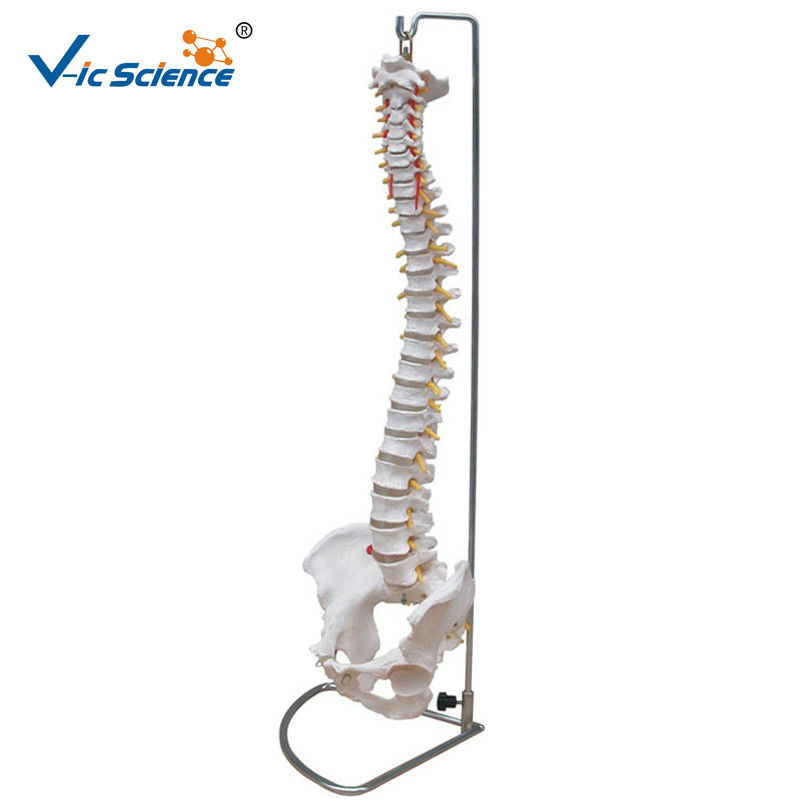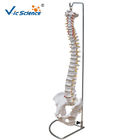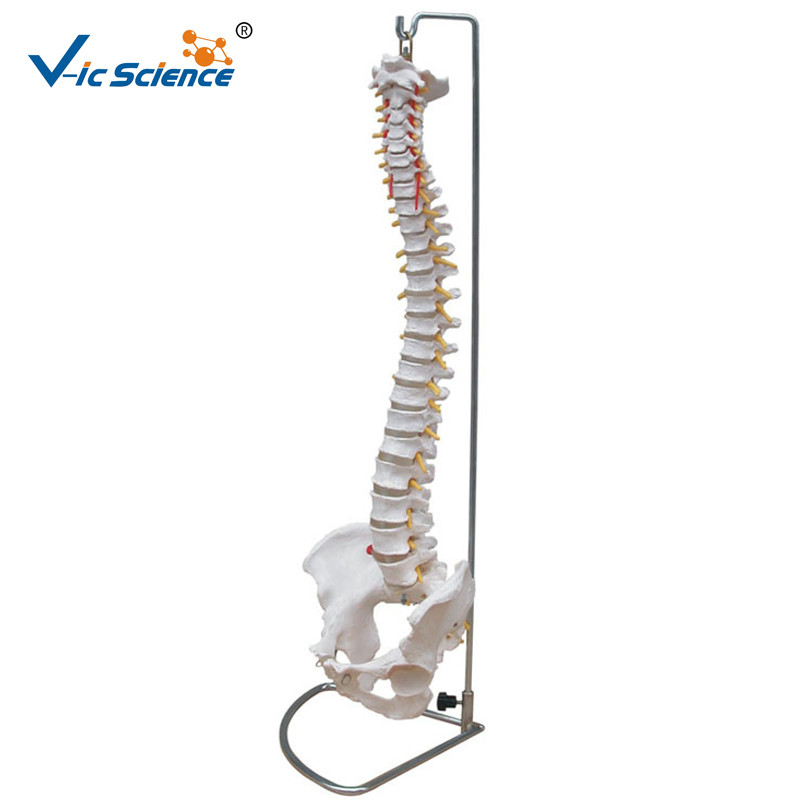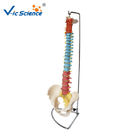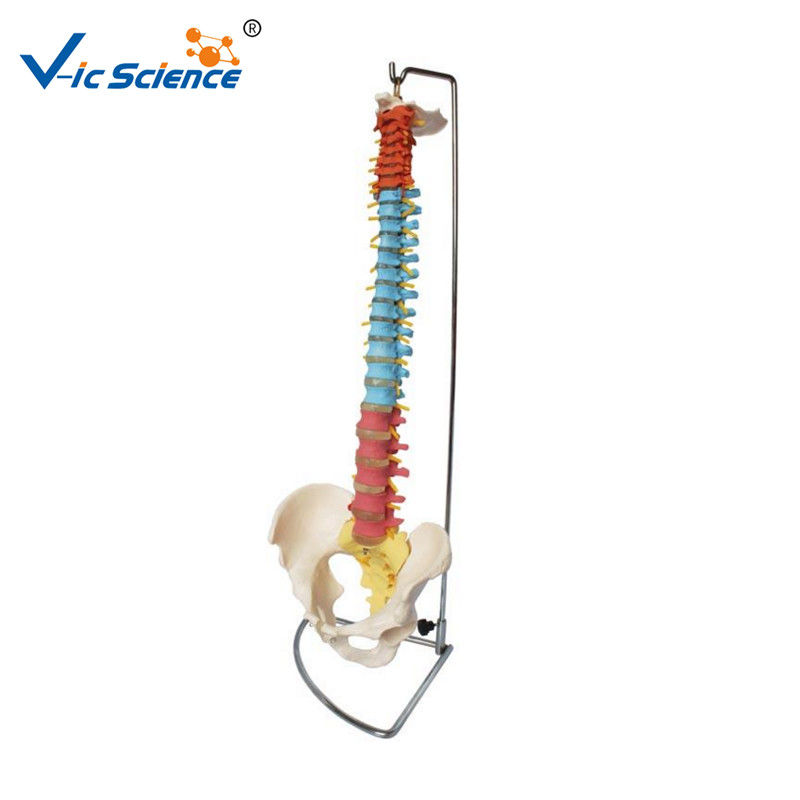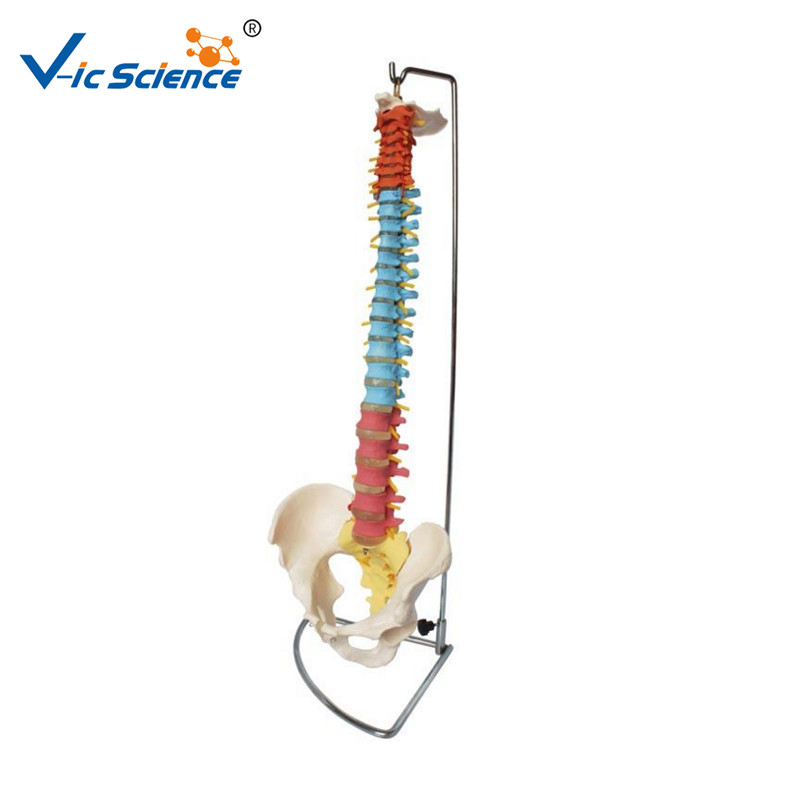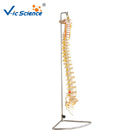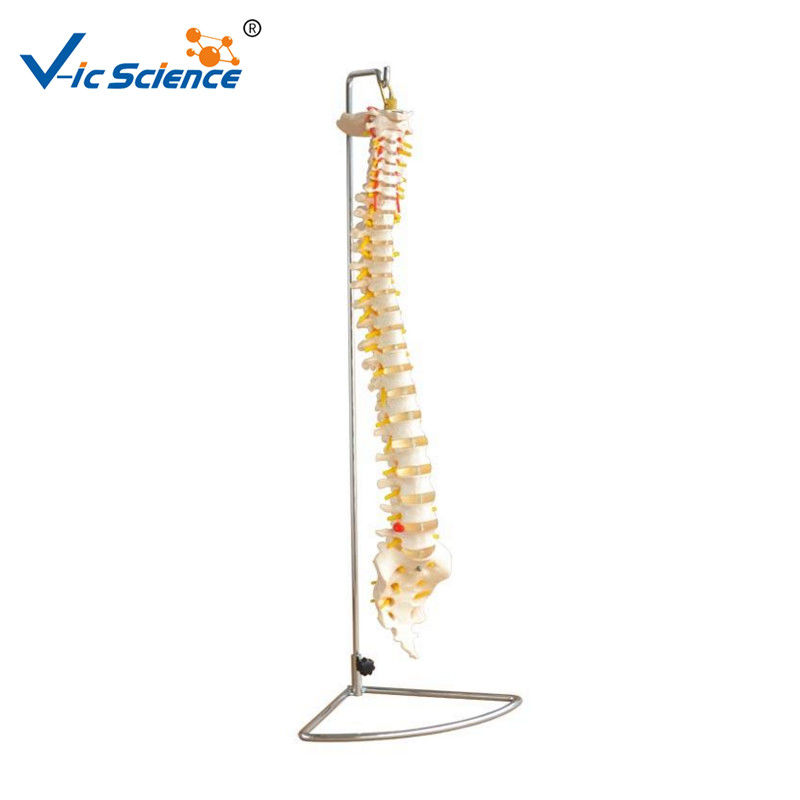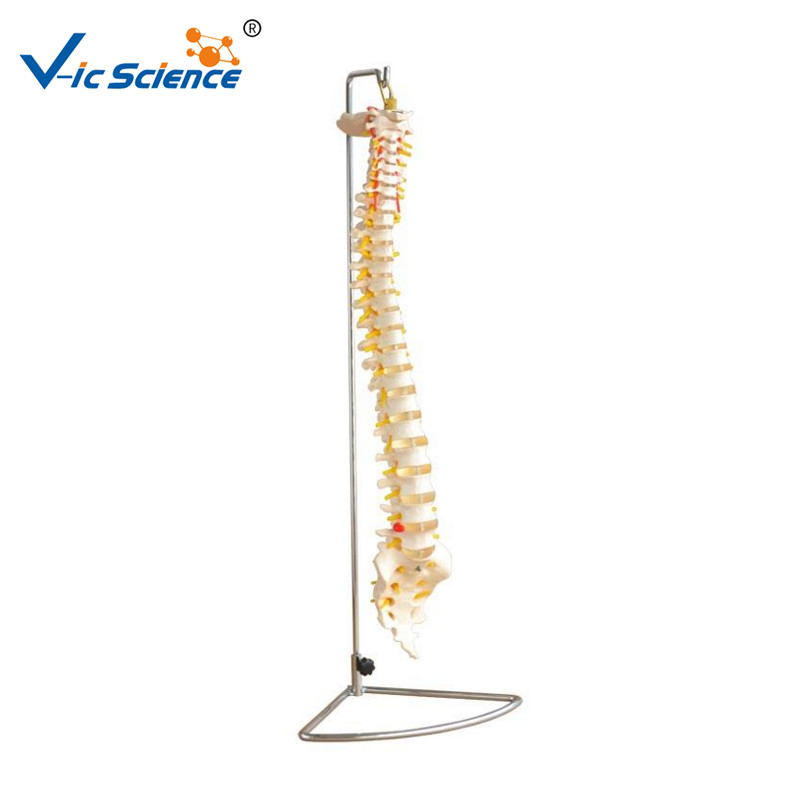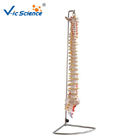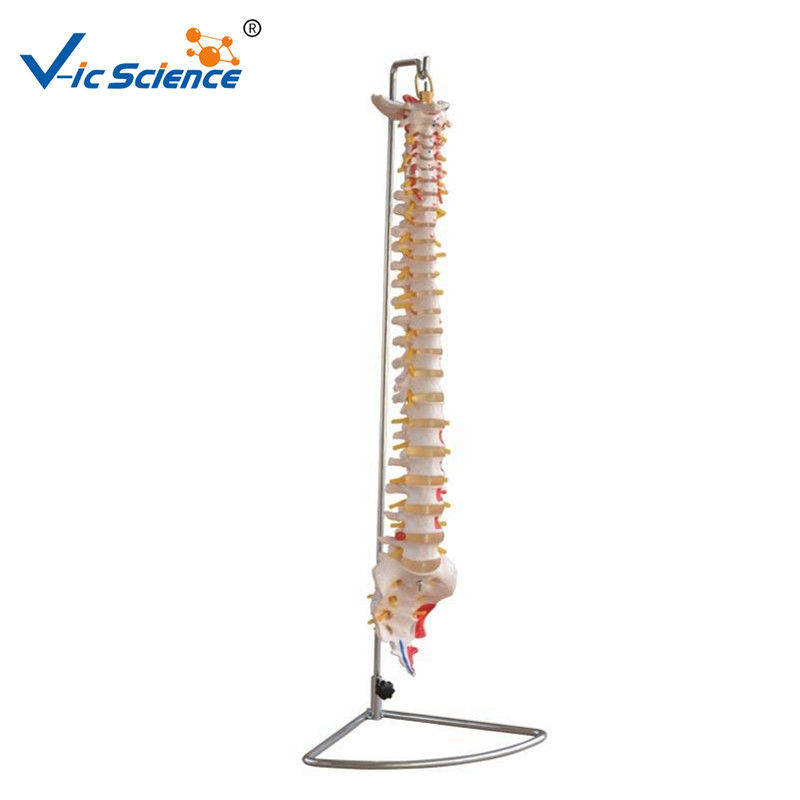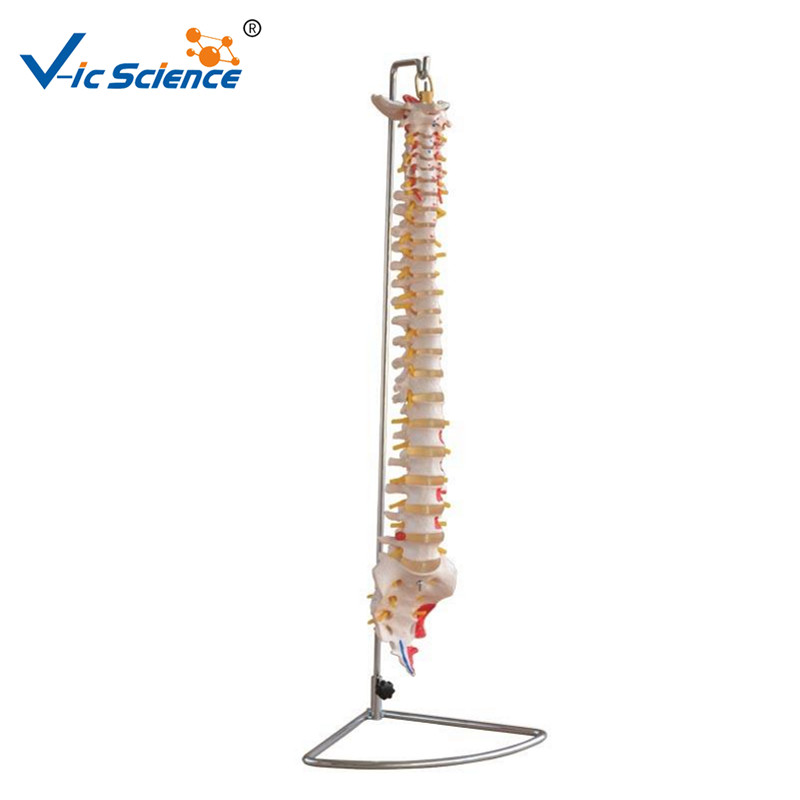|
VIC-107 Life-Size Vertebral Column
This model shows all significant features of each vertebra, including spinal cord, nerve roots, the vertebral artery, a herniated disc and vertebral notch etc. Special features include: flexible vertebral column, sacrum, occipital bone, vertebral artery, all nerve branches and herniated lumbar disc.
Packing: 2pcs/carton, 80x32x39cm, 7kgs
VIC-107C Didactic Vertebral Column
This model is upgraded from VIC-107, and features different sections of the spinal column in different color: cervical vertebrae, thoracic vertebrae, lumbar vertebrae, sacrum and the coccyx.
Packing: 2pcs/carton, 80x32x39cm, 7kgs
VIC-107A Vertebral Column with Painted Muscles
Based on VIC-107, this model is painted to show the muscles. The left side of the vertebral column shows the points of origin (red) and the points of insertion (blue) of the muscles.
Packing: 2pcs/carton, 80x32x39cm, 7kgs
VIC-105 Life-Size Vertebral Column with Pelvis
This model shows all significant features of each vertebra, including spinal cord, nerve roots, the vertebral artery, a herniated disc and vertebral notch etc. Special features include: flexible vertebral column complete with pelvis, sacrum, occipital bone, vertebral artery, all nerve branches and herniated lumbar disc.
Packing: 2pcs/carton, 80x32x39cm, 9kgs
VIC-105C Didactic Vertebral Column with Pelvis
This model is upgraded from VIC-105, and features different sections of the spinal column in different color: cervical vertebrae, thoracic vertebrae, lumbar vertebrae, sacrum and the coccyx.
Packing: 2pcs/carton, 80x32x39cm, 9kgs
VIC-105A Vertebral Column with Pelvisand Painted Muscles
Based on VIC-105, this model is painted to show the muscles. The left side of the vertebral column
shows the points of origin (red) and the points of insertion (blue) of the muscles.
Packing: 2pcs/carton, 80x32x39cm, 9kgs
VIC-126 Life-Size Vertebral Column with Pelvis and Femur Heads
This model shows all significant features of each vertebra, including spinal cord, nerve roots, the vertebral artery, a herniated disc and vertebral notch etc. Special features include: flexible vertebral column complete with pelvis, sacrum, occipital bone, femur heads, vertebral artery, all nerve branches and herniated lumbar disc.
Packing: 2pcs/carton, 88x32x39cm, 10kgs
VIC-126C Didactic Vertebral Column with Pelvis and Femur Heads
This model is upgraded from VIC-126, and features different sections of the spinal column in different color: cervical vertebrae, thoracic vertebrae, lumbar vertebrae, sacrum and the coccyx.
Packing: 2pcs/carton, 88x32x39cm, 10kgs
|
 Your message must be between 20-3,000 characters!
Your message must be between 20-3,000 characters! Please check your E-mail!
Please check your E-mail!  Your message must be between 20-3,000 characters!
Your message must be between 20-3,000 characters! Please check your E-mail!
Please check your E-mail!
